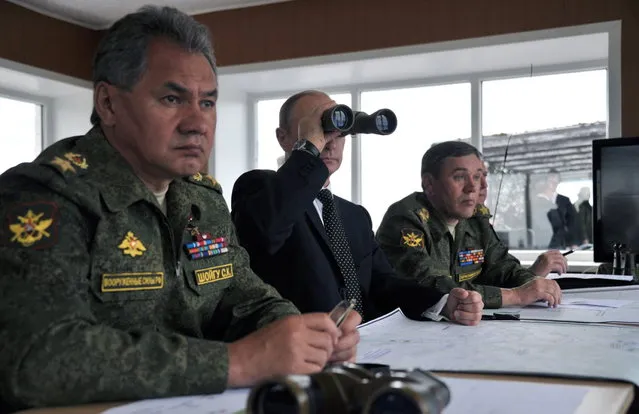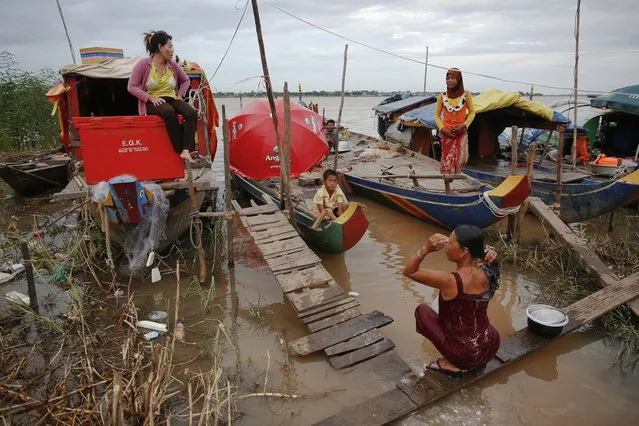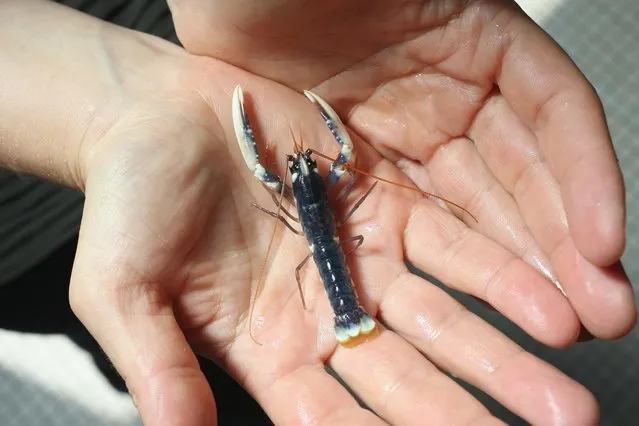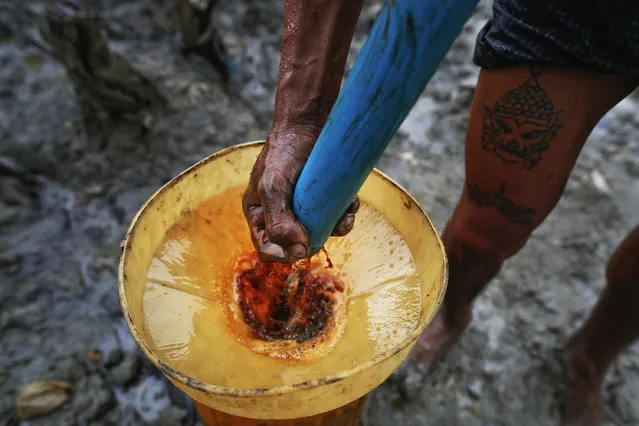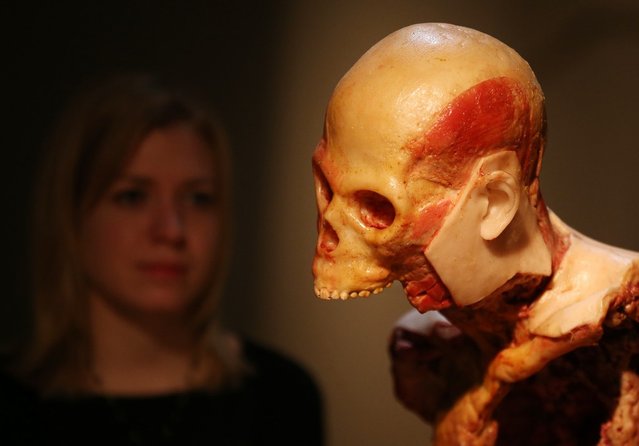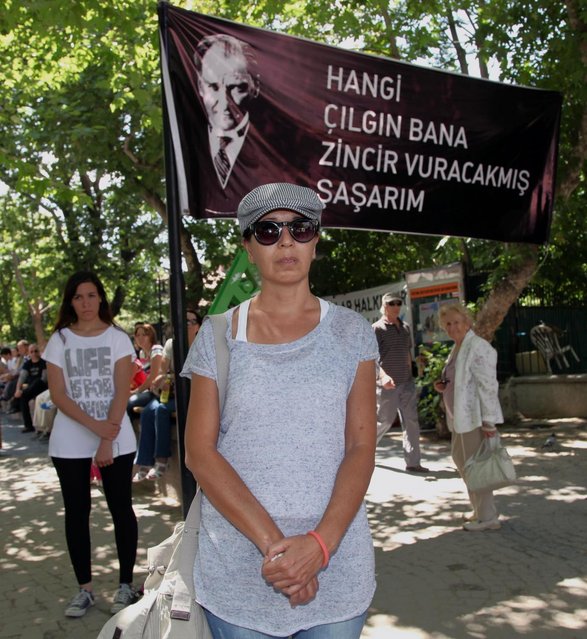
Turks stand in a silent protest in Kugulu Park in Ankara, Turkey, Wednesday, June 19, 2013. After weeks of sometimes-violent confrontation with police, Turkish protesters have found a new form of resistance: standing still and silent. The banner with an image of Turkey's founder Kemal Ataturk reads: “Which crazy person thinks they can put me in chains”. (Photo by Burhan Ozbilic/AP Photoi)
20 Jun 2013 09:37:00,post received
0 comments

